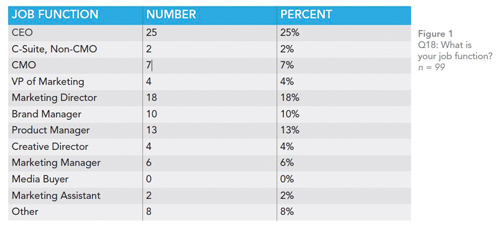David Phillips, president & COO of NLogic, explains why having a data strategy can lead us astray.
 By David Phillips
By David Phillips
In this age of big data, it’s easy to believe that we inevitably understand more and more of the world around us.
In fact, the opposite can be true. Data has the potential to blind us to the realities not covered numerically. So, how do you uncover your blind spots and use data smartly?
And why should you never, ever have a data strategy?
The fallibility of numbers
We tend to think numbers are always right and therefore don’t challenge something if it’s a number. In a 2019 article, author and blogger Bob Hoffman illustrated how a single claim by a reputable magazine, Forbes, talked about Millennials reaching $200 billion in buying power by 2018. The Forbes article goes on to say that Millennials will have the strongest buying power over any other generation by 2018.
Without evidence, sources or statistics, social media and other news sites repeated this statement so much that it seemed like fact. Why was everyone so quick to assume this assertion was accurate? Essentially, people chose to believe it because it was a number.
We also tend to think that numbers are more right than words. Using data seems to automatically make us believe we are acting reasonably and making rational decisions. We believe that data helps us make good decisions.
I wonder whether data can, in fact, actually lead us to make bad decisions.
Data is a funny beast. It is not straightforward, not neutral, not infallible and it’s usually misunderstood. Here are two things you need to understand about data:
First, data is a means to an end, not the end itself. Data is information, not knowledge. Many people work under the false assumption that just by having data, or by having lots more data, then they will have more knowledge. This is asking too much of data.
Second, data has limitations. Qualitative is different from quantitative, and within quantitative there is a broad range of methodologies. While some data you deal with may be more accurate than others (i.e. “garbage in, garbage out”), almost all data are estimates and must be treated as such.
Now that we all have a better understanding around the limitations of data, here are three reasons why you shouldn’t have a data strategy:
1. A data strategy is not a thing. It doesn’t make any sense as a concept. It’s like saying you have a “sockets and wrenches strategy” when faced with a broken-down car. Data is a means to an end, not the other way around.
2. Blind spots are the downsides of a data-first mindset. We’ve moved to an era of “data or it didn’t happen”. We need to recognize that all data is limited, in that there are things it cannot tell you. Or, more frequently, it creates the impression of being a holistic picture whereas in actual fact it isn’t.
Take the 2016 U.S. elections where Donald Trump surprised the entire world by being elected the 45th president of the United States. All the data pointed to Hillary Clinton, but the data wasn’t showing us the complete picture. The problem is that once you prioritize what you see, you de-prioritize what you don’t see, causing blind spots.
3. A data-created brand crisis. Not only are we potentially missing the complete picture and prioritizing the wrong things, we are creating our own brand crisis by focusing on the wrong data.
With the growth of online activation, the rise of white-label products, and the reduction of purchasing friction through online shopping and voice assistants, branding has become more important than ever. When almost any product can be delivered to your door within a day or so just by talking into a speaker, getting someone to say your brand versus someone else’s is vital.
And yet, blinded by data, too many brands are doubling down on short-term thinking and harming their brands and their businesses as a consequence.
So, what should you do? Here are the steps:
Choose a business strategy over a data strategy. Identify which parts of that strategy can be informed by your data assets and then see where you have blind spots. Determine whether the blind spots are in strategically important areas that would be helped if you had more data. This will help you overcome number bias, where we think something must be true because it’s a number.
Realize what it is, emotionally or politically, that data is actually providing. We need to be very conscious of the role that data can play when making decisions. The role of data is to help us make decisions, it does not make the decisions for us.
We have a tendency to automatically consider data to be facts, making it difficult for us to contradict an argument that uses it. And yet we know — at least at some level — that not all numbers are factual. Not getting too caught up in the data will help you balance its relative importance around any decision and instead provide you with a better perspective.
Fix the blind spots. As mentioned before, the key is not to pretend blind spots aren’t there, but instead to identify them and find a solution. Once identified, you can get the data, tools or support you need to address them.
David Phillips is president and COO, NLogic. NLogic is a member of the Canadian Marketing Association and a presenting sponsor at CMAmedia, taking place on October 1, 2020
This article is provided by the Canadian Marketing Association (www.thecma.ca).


